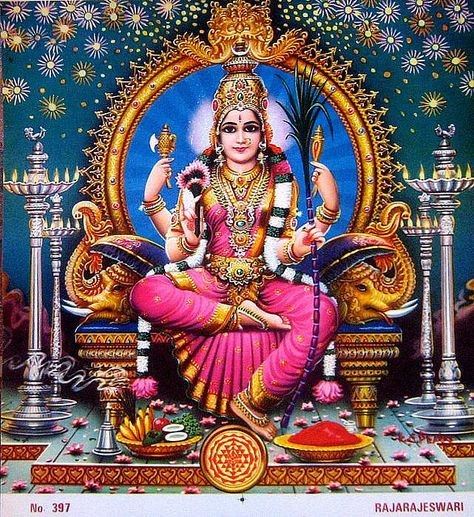The Goddess Divine Mother is the mother of the universe, which is the aggregate of all five elements (ether, air, fire, water and earth).
The Divine Mother is the mother of Akasa with other four elements and everything in this universe. The ultimate original starting place Brahman (Lord Shiva) in single form. This Athishakti, the Divine Mother had separated out. From Her all five elements (Akasa, Vayu, Fire, Water and Earth) came out. For the soul tattva, these five elements are helping. For the universe and all beings in the universe, She is the Mother. The humans ought to accept and have the mind to praise the Divine Mother.
From Brahman or the Divine Mother, the five elements including earth came out. From earth plants and crops, food and mankind emerged. Jagat (universe) is moving always; Viyad means moving away. This is to interpret this Namam as that the Divine Mother creates five elements, further crops, food, and mankind; She is moving always, yet She is staying away from them.
When one goes into Akasa it keeps moving further away. Likewise, Brahman looks near but when someone is nearing it, it will be much further away for him. So, She is staying away.
When a child is in mother’s womb, it is getting ready to
come out to the world, there is no additional food needed from the biological
mother’s body. The child can stay away and get food from outside. So, the
biological mother separates the child away. Prasuh means biological mother, who
delivers the child. Likewise, the Divine Mother keeps the five elements under
Her care before releasing them to be independent. She is the Universal Mother,
“VIyadadi jagat prasuh.”
The Divine Mother creates
the universe.
C N Nachiappun
Singapore, 28 July 2021.
References:
1.
The Thousand Names of the Divine Mother
published in English by Mata Amritanandamayi Center, San Ramon, California,
USA, with Commentary by T. V Narayana Menon
2.
Shri Lalitha Sahasranama Stostram published in
Tamil by N. Ramaswami Iyer charities’ societies, Trichirapalli, India, with
Commentary by C. V. Radhakrishna Sastry.
3.
The Lalitha Sahasranamam published in Tamil by
Shri Ramakrishna Thapovanam, Thiruipparaithurai, Trichy District, Tamilnadu,
India with commentary by Shrimath Swami Sithbavandar
















